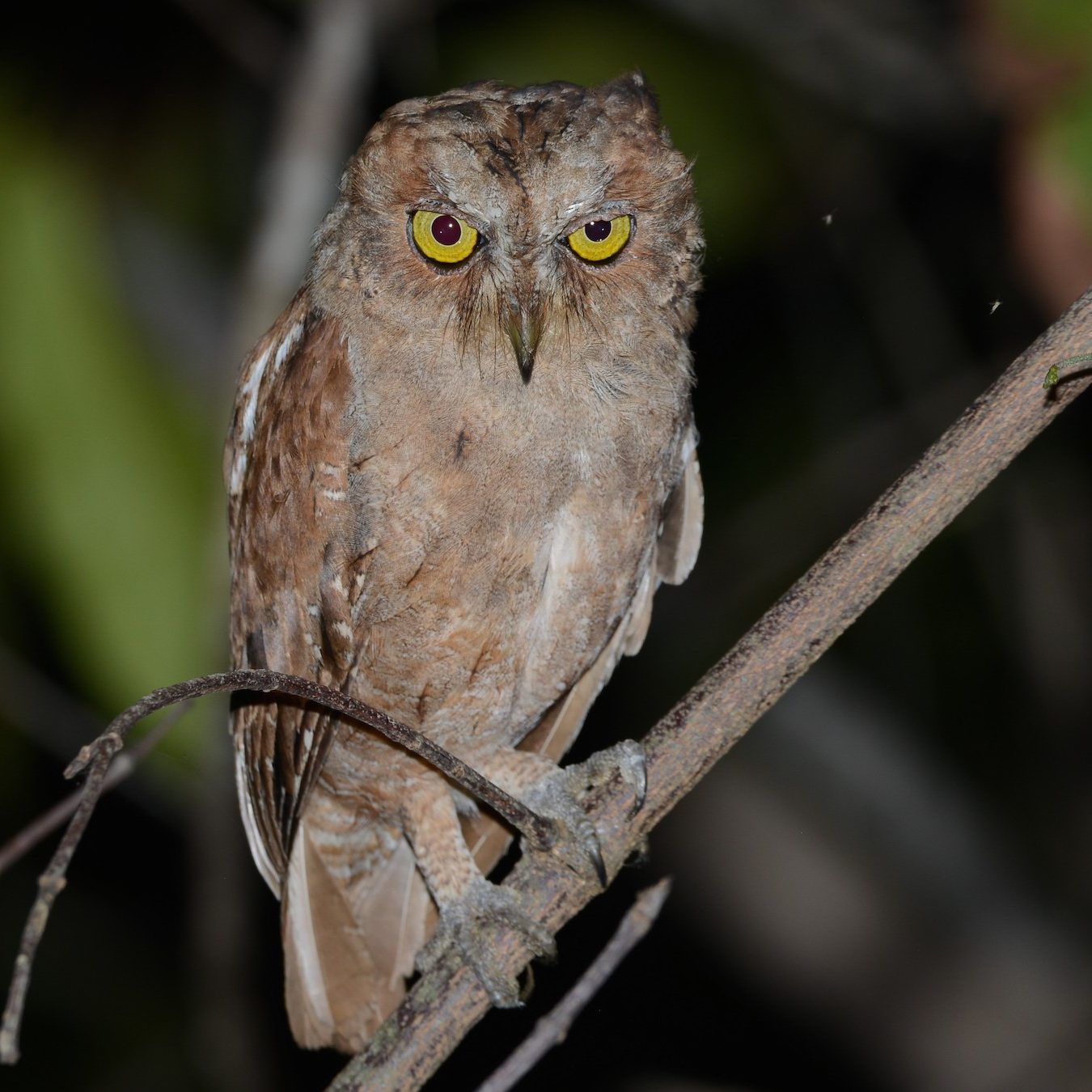Zanzibar is home to a fragile host of ecosystems that are the habitats of a number of amazing mammals, birds, reptiles and amphibians. A great number of these animals can only be found in this part of the world and the ecosystems that support them require extensive preservation efforts so that each one of these animals can continue to survive.
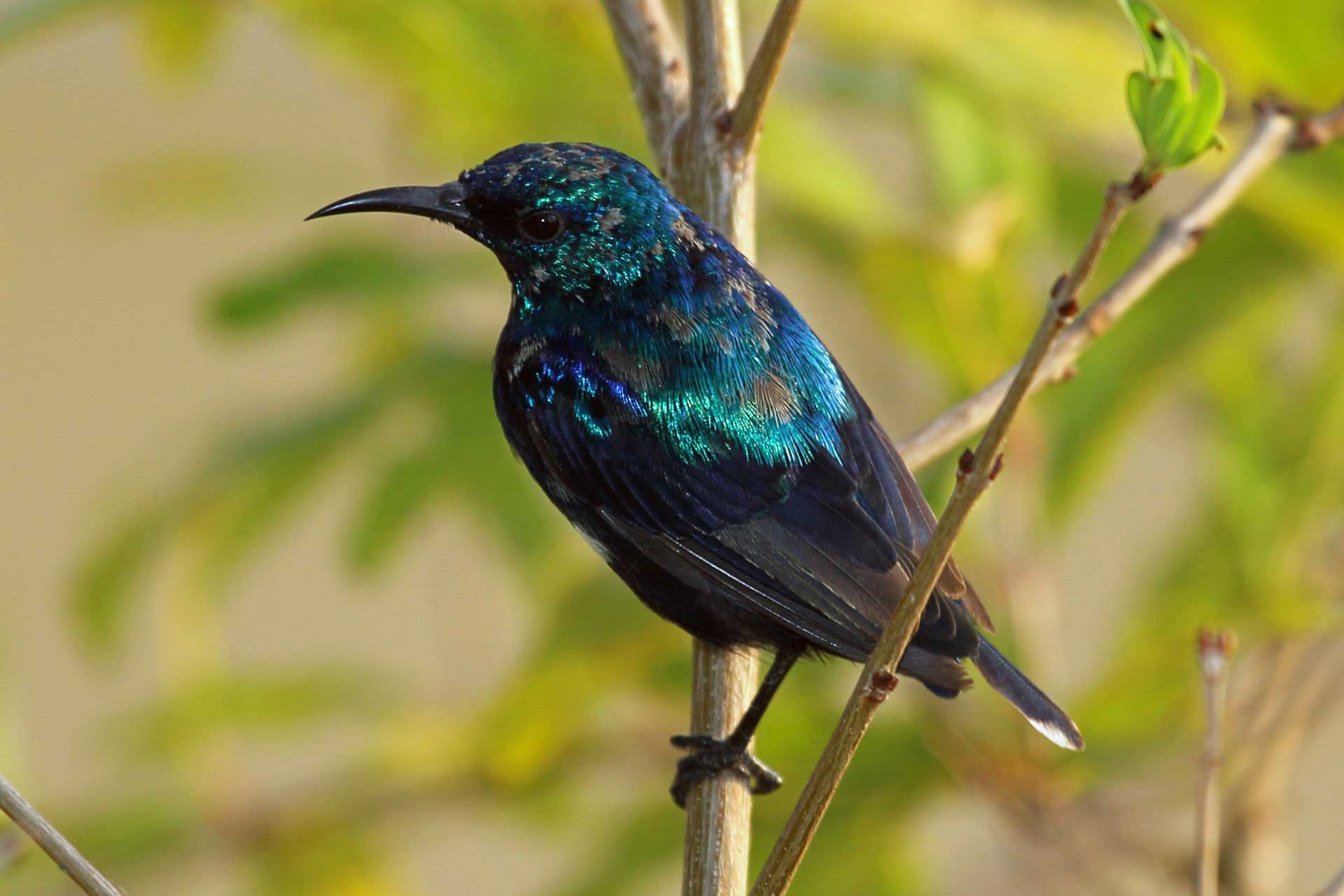
Nigel Voaden from UK [CC BY-SA 2.0 (https://creativecommons.org/licenses/by-sa/2.0)]
Pemba Sunbird
The Pemba sunbird is a small sunbird known for its violet-colored breast and shiny green head. They generally reach between 9 to 10 cm in height and the sexes can be told apart from the green to blue reflections and upper wing purple colors of males.
The Pemba sunbird can be found throughout Zanzibar and is known for its unique warble sound which rises in volume and pitch, resembling a “Tslink” sound. These birds can be found in treetops throughout the island.
In most cases these animals feed on berries, nectar and insects found throughout the island. However, as more deforestation takes place, parts of its extremely balanced diet that these animals need to thrive are taken away.
They live in slightly purse shaped nests lined with their own down for temperature regulation of the eggs. If the bird is unable to get proper nutrition, however, the eggs will often not hatch because the quality of the plumage is not high enough to sustain the nest.
These birds remain quite common throughout Pemba, and as of now there is no ongoing conservation effort. However, as the number of fruit trees remains on the decline their numbers could take a turn for the worse in the near future.
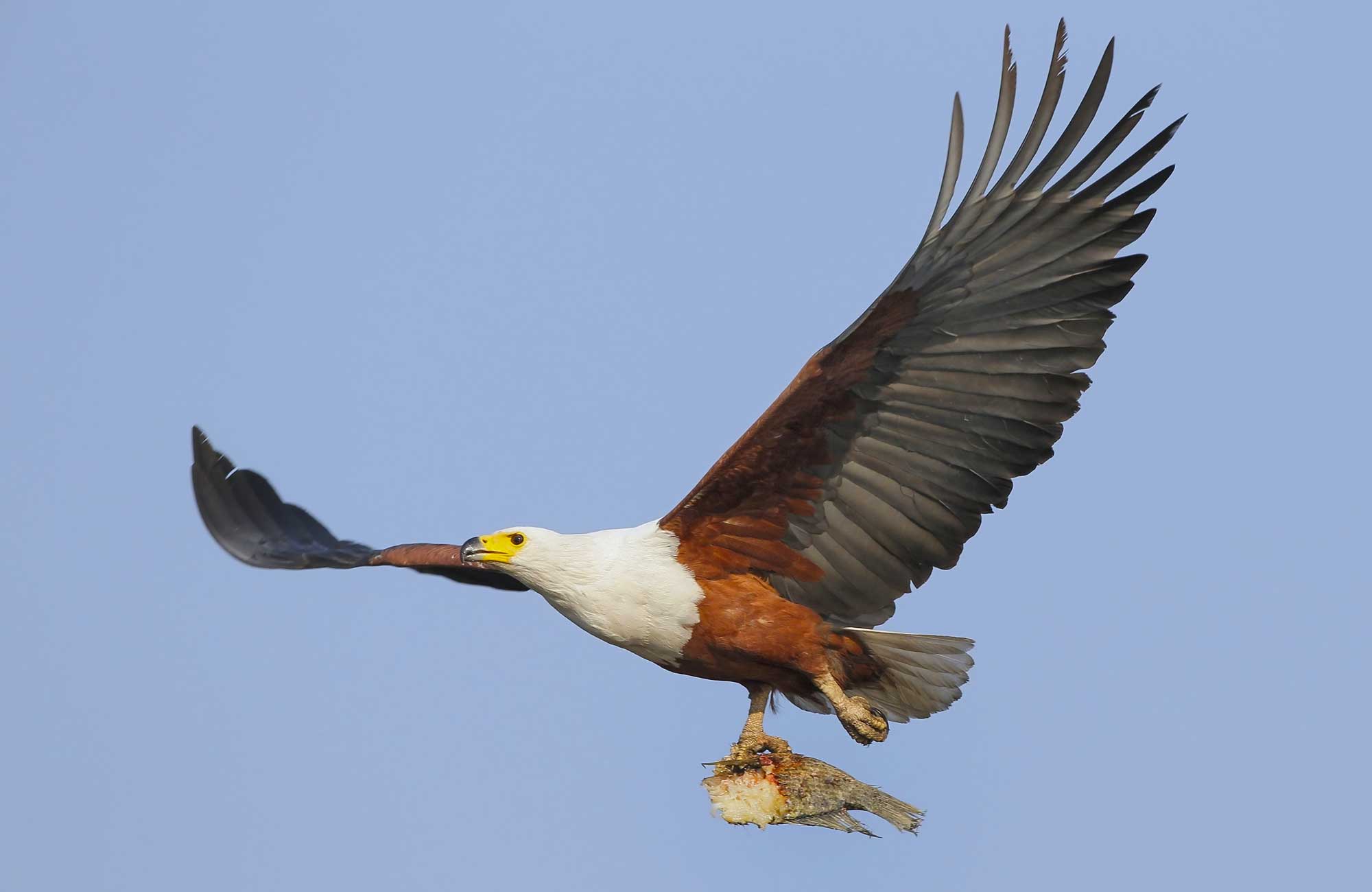
Fish Eagle
The African fish eagle is a bird that can be found along the coastlines in Zanzibar. Although it looks very similar to the bald eagle, it’s different from other types of eagles. The African fish eagle is not as critically endangered as the Madagascar fish eagle, but it does require a delicate ecological balance in order to survive.
Most fish eagles are known for their dark talons, dark eyes and darker beaks. They have a white or tan colored head, and they usually grow to a size of around 5.5 pounds with a wingspan of up to 8 feet. They are muscular birds known for their hook-shaped beaks and their ability to use their talons for fishing along the swamps, marshes, and coastlines.
Most of the time you’ll find African fish eagles in areas with access to water. They stick to the rain forest, marshes and grassland, and will not be found in arid areas. This can be a big problem, as the areas these eagles live in are being cleared for agriculture and construction in Zanzibar.
The African fish eagle is famous in the area, so it’s no wonder it is the national bird of Zimbabwe. You can find this mighty bird in Zambia, South Sudan and Namibia.
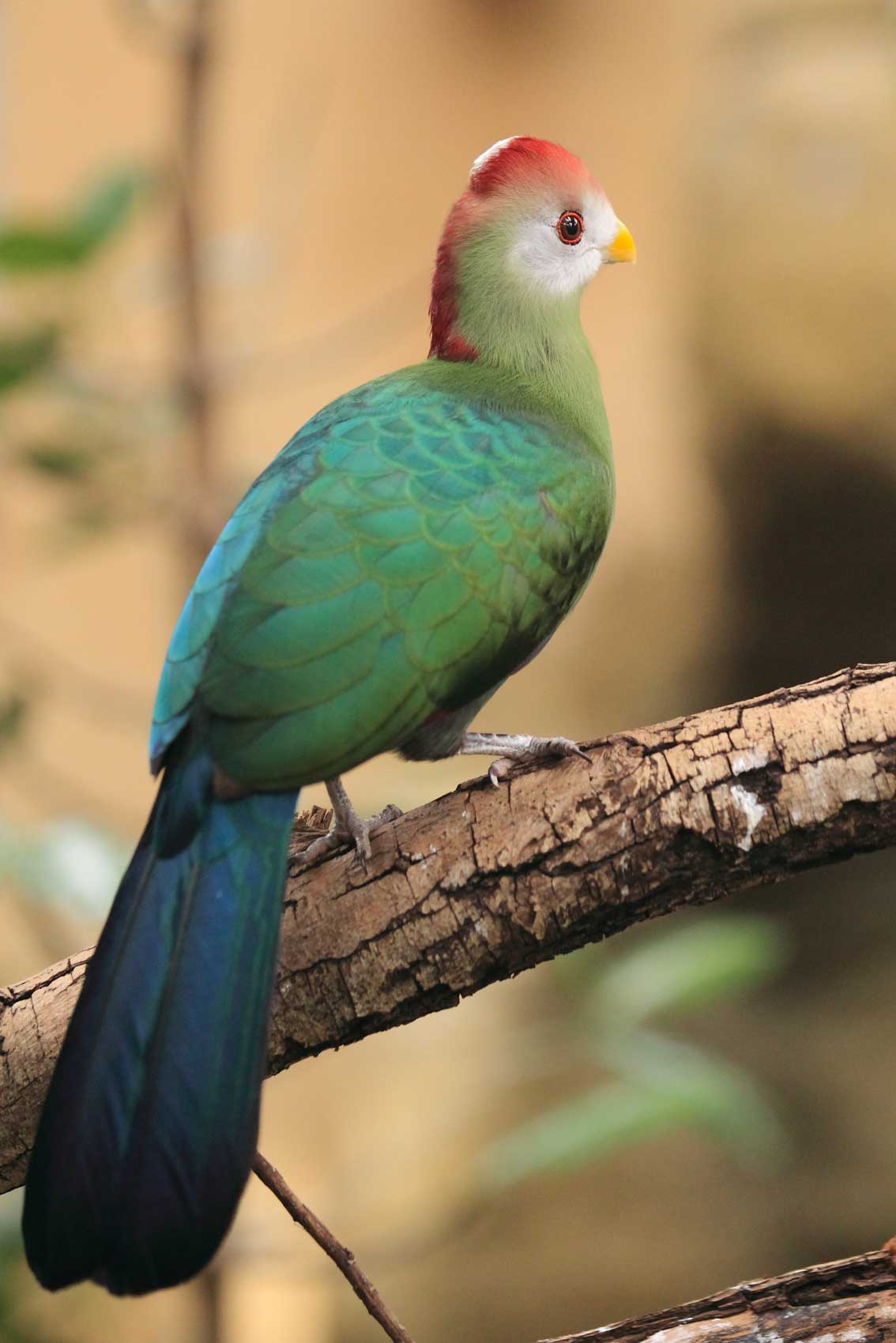
Fischer’s Turaco
Fischer’s Turaco is a unique tropical bird that is currently on the list of endangered species. They like to stick with tropical environments such as mountain forests, but they are also found in lowland forests.
This bird is instantly recognizable with its green plumage, a red ridge at the top of its head and the bright red flecks around the eyes. This species of bird is medium sized, but they can be much larger than some of the other native birds in the area and they prefer climbing to flying. Their claws make it quite easy for them to navigate various types of vegetation and they move across branches easily, even in high trees. They can grow to a length of around 75 cm/30 inches and they commonly survive on vegetation and several types of fruit. These birds are also known for their extensive lifespans as some of them live up to 30 years in the wild.
The main threat to the Fischer’s turanco’s existence is the shrinking of its habitat. As more people continue to move into Zanzibar and eliminate trees this bird depends on for food and nesting, it’s very difficult for this bird to keep their population at healthy numbers. As more deforestation occurs throughout Zanzibar, their numbers will continue to decline.

Brown-Headed Parrot
Brown-headed parrots are also known as African parrots and can be found throughout South Africa and Zanzibar. These parrots are aptly named with a bright green almost metallic plumage on their body and a darker more yellow to brown colored head. These birds’ tail is generally an olive color, but it does have a green tip at the end. The irises of these animals are quite distinctive with a greenish yellow tinge. Their legs are black, and their bill is black on top and white below.
These birds are known for their fast and direct flight pattern and their gentle temperament. They are commonly kept as pets, but as they are close to being an endangered species they are increasingly difficult to find in the wild.
Generally, the brown-headed parrot will spend its time eating berries, nuts, fruits, flowers and more. As deforestation is ongoing in Zanzibar the birds are experiencing a shortage in food supply. A larger subspecies of this animal has already gone extinct as a result of deforestation. While the regular brown-headed parrot still exists in Zanzibar, it is only a matter of time before the building of new resorts and deforestation become a danger to their existence.
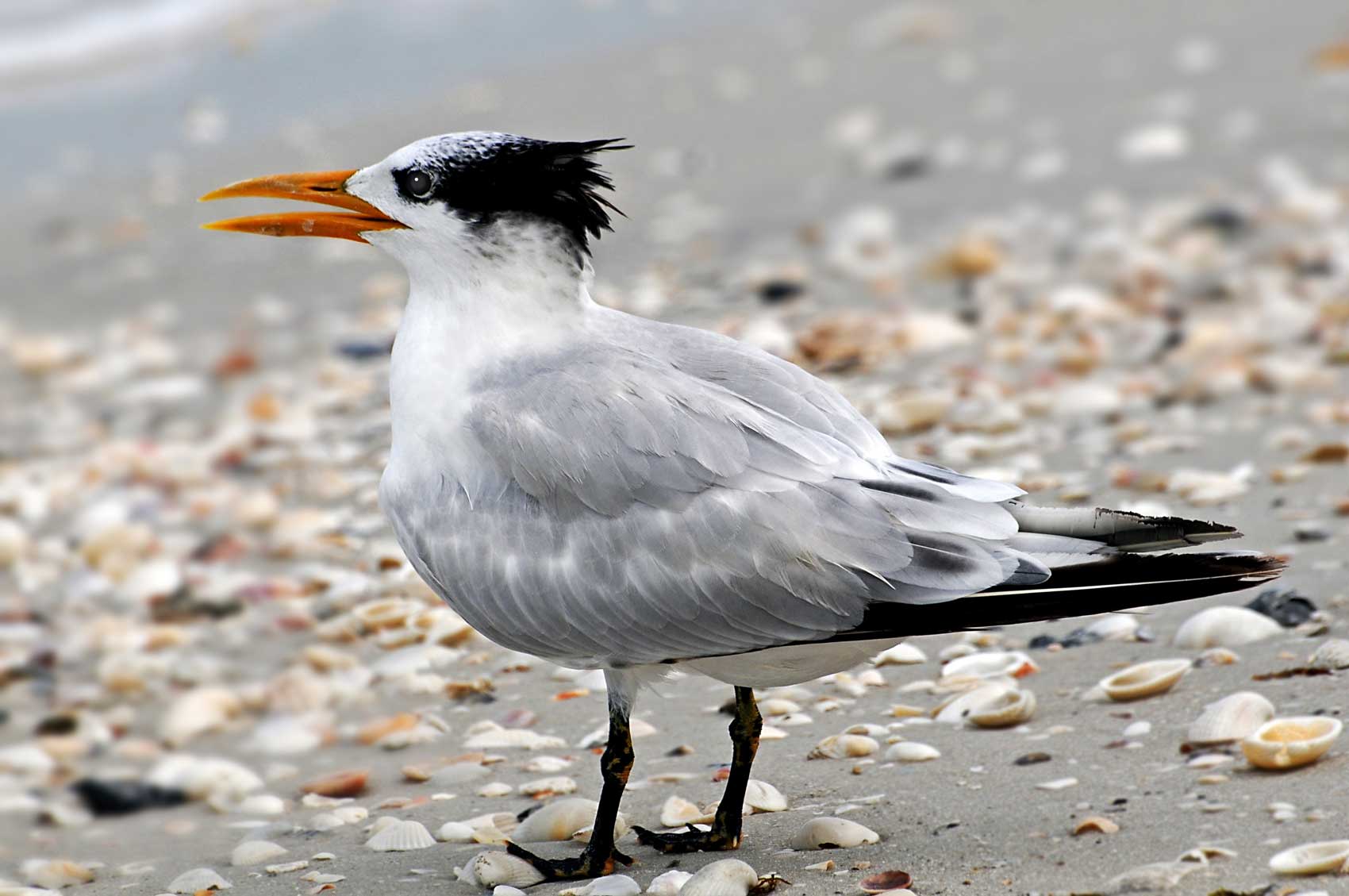
Roseate Terns
The Roseate tern is a fairly common seabird throughout the world. This type of sea tern lives throughout Zanzibar as well as in Europe, North America and the Caribbean. The terns that come from Zanzibar are known for the rose-like hue of the breast. This lighter colored breast is the only major difference between this variety of tern and terns from other parts of the world.
In most cases this bird lives off fish that is caught using a plunge dive fishing technique. Males often offer females fish as a display of courtship, and they can even regularly be found stealing fish from other types of seabirds, sometimes even mid-air.
The main issue many of these birds faced throughout the 19th century were hunters. Many of the largest terns were hunted for their plumes, which were commonly used for decoration in hats and clothing. The food sources for many of these terns have also changed considerably over the years, especially with global warming and many varieties of fish moving to more tropical waters. Colonies of terns in this area now have to compete with other animals for food, and as a result their numbers are starting to decline.
Pemba Scops Owl
The Pemba scops owl can be found throughout Pemba Island and is a candidate for the list of endangered species. The owl is known for its medium-sized stature as well is it short ear tufts. It has two main morphs of color: a brown morph and a light tan morph.
Usually these owls can be found in dense wooded habitats. They tend to stick to native forests and plantations of mango and cloves. With most native forests throughout Zanzibar being cut down, it’s only a matter of time before the conservation status of this owl slips from vulnerable to at-risk. It’s estimated that at this moment the full population of Pemba owls only consists of 1500 breeding pairs worldwide.
If you want to find one of these owls in the wild, you have to listen for their distinct hoo call and be very quiet making your way through one of the native forests in the evenings. They can be quite difficult to spot, and as plantations are cleared to make way for agricultural fields it can be increasingly difficult to find these animals out in the wild.


